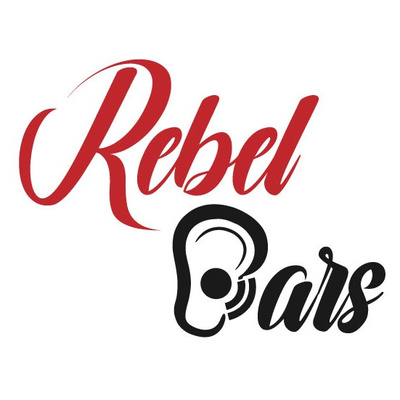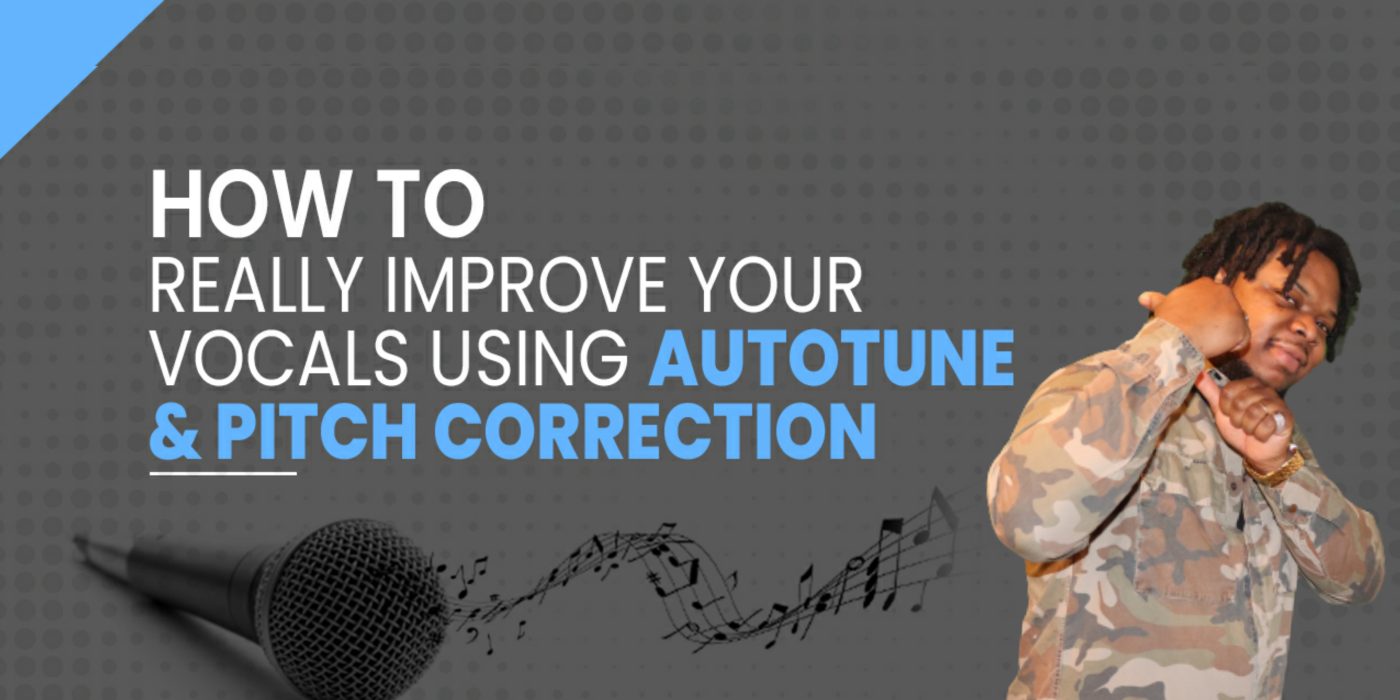Blog
How to Really Improve Your Vocals Using Autotune and Pitch Correction
AutoTune involves the process of fine-tuning a recorded vocal production in order to make it more dimensionally expressive. To achieve this, pitch related issues are significantly altered or corrected to eliminate the negative impact they would have in the final output of the sound production. Therefore, it will not be farfetched to consider AutoTune as an audio processor that performs the function of correcting pitch in vocal and instrumentals while helping to disguise pitch inaccuracies. Clearly, many music producers have utilized pitch correction in their music production however, many of them cannot really relate with the rich history behind the use of AutoTune in music and sound production. This article seeks to enlighten many on the origin of AutoTune, the components and description of AutoTune, how to find the right song key for AutoTune and commonly used plugins and techniques of pitch correction.
Historically, AutoTune was introduced to the audio production industry on the 19th day of September, 1997 by Andy Hildebrand; the CEO of Antares Audio Technology, who owns the registered trademark for AutoTune. It is believed that Hildebrand created AutoTune when the wife of one of his colleagues made a joke about needing the assistance of a device in order to sing with the right tune. The joke was believed to have been the smoldering ember that ignited the flame of creating a vocal pitch correction technology now known as AutoTune.
At inception, the technology was designed to correct imprecise pitch/intonations in a discreet way without affecting the expressiveness of the original signal. What this means, is that a singer would no longer have to worry about missing the high note since AutoTune would put notes in check, the same way a spell checker does in correcting wrong spellings. In the same vein, AutoTune was also used to disguise or correct vocals that were supposedly sung off-key and tune them accordingly. With time, the usage shifts from being used as a pitch corrector to becoming an effect that is deliberately used by producers to distort vocals as often as possible. With the introduction of AutoTune into the music scene, it is believed that many artists jumped on the bandwagon to the extent that sometime in 2018, prominent music critic Simon Reynolds stated that AutoTune has had an immense revolutionary effect in the music industry. Although AutoTune in recent time is commonly known for its characteristic robotic vocal style which is dominant in contemporary pop music, the beauty of AutoTune is that it helps in cleaning up minor flaws that may occur in the course of performing or recording.
How to Find Key in AutoTune and The Importance of The Key
To begin the process of AutoTune, finding the key of the music is important because this is the only way you will be able to detect if the singer or instrument is sounding or playing off, before the pitch or intonation can be corrected. AutoTune operates based on what it is commanded to do, this being the case, you are expected to dictate the key AutoTune will work on. The question at this point would probably be how to find the key to work on? Well, you need not look any further if you have a skilled listening ear. However, even if you do not have a good listening ear that would help you identify the key, embedded in AutoTune is a thing called “Auto Key” which performs the function of helping to find the key for the music.
As I mentioned earlier, AutoTune will only do what it is expected to do. So, imagine a production with C major as its key and the person operating AutoTune set it at G major. It means AutoTune will alter notes that are not supposed to be altered in the course of trying to make the production align with the G major key, even if you don’t want them to be corrected. So, in order to avoid this, you have to ensure your key is spot on and in accordance with your music.
Other Plugins/Technology That Are Used to Correct Pitch
With time, other plugins aside from Antares AutoTune were made to perform similar functions of correcting pitch/intonation issues after the likes of popular musicians: Kayne West, Lil Wayne and T-Pain endorsed their usage. Please find below other pitch correction plugins/technology:
1. Waves Tune
This comes with an easy to use interface and can come with vocal tuning options in its portfolio while also delivering quality audio which makes many to pitch their tent with it. You can purchase it on its own, or as part of the Vocal Bundle.
2. Mu Technologies Mu Voice
This performs multiple functions like creating vocal effects and generating artificial harmony. Mu Voice also has a pitch correction option although the result may not be a desirable one, but if you need a plugin that gives users a broader scope, this would be your best bet.
3. Steinberg PitchCorrect
This one is exclusively a Digital Audio Workstation based pitch correction. It was first used in Cubase 5. It allows users to make pitch correction as they deem fit.
4. Other pitch/intonation correction plugins/technology includes the following:
Zynaptiq Pitchmap
Celemony Software/Melodyne Plugin
Melda MAutoPitch
Cakewalk/Roland V-Vocal
Synchro Arts Revoice Pro
Izotope Nectar
Logic Pro Pitch Correction
There are many other pitch correction technologies/plugins, but those listed above are the most popular ones and you can read up on any of the above-mentioned if you intend to know more about them.
Parameters
Every pitch correction plugin/technology has various parameters (knobs) that can be adjusted when using it. In almost all of them, you’ll work with five options which are listed below:
- Key, Scale, & Input Type.
- Retune Speed or Response Time.
- Flex Tune.
- Humanize.
- Natural Vibrato
The names as they appear are exactly the way these parameters are named on the official Antares AutoTune plugin and are likely what they will be called on other pitch correction plugins/technology. How important are these parameters and what are their functions when you utilize auto tunes in your music production?
Key, Scale, Root & Input Type – This parameter is important because without it, the plugin/technology would have no idea of the pitch to adjust to. The keys can be chosen from a list of keys or can be punched in manually by the user. These keys are always in major, minor and harmonic minor scale etc. The input type offers the user the choice of choosing between a normal (high vocal range) or Low (which is the low vocal range usually Bass or Baritone). Other plugins allow users to choose the vocal part like Soprano, Alto, Tenor and Bass. Upon selections it would be easier for the software to process the correction accurately.
Retune Speed – The retune speed or response time is usually measured in milliseconds. The retune speed determines how fast a bad note is tuned to the correct one. It is important not to set the retune speed to a fast time, because the glitches in the music will be obvious to listeners. A slower retune time will not easily be detected by the listener which also helps to get a natural sound.
Flex Tune – The flex tune parameter deals with smoothness; it is not so common in other pitch correction plugins. Its function basically adds smoothness to a track that has already been processed, but needs a faster refund to make it sound well due to the vocalist’s bad pitch. It makes the pitch correction inaudible to listeners by smoothing out the transition.
Humanize – The humanize parameter performs a function that is similar to that of a release time on a compressor. It determines how long the pitch correction holds, especially when the note to be corrected is a long or sustained note. It is definitely not needed when the note is not a long note. It also performs the function of correcting unintended vibrato in long notes.
Natural Vibrato (Vibrato Adjustment) – This parameter works in opposition to the function performed by humanize. It is not a common option on most pitch corrections. It basically introduces vibrato where it is needed. If vibrato is needed in a song and the singer does not have the required skills to pull it off, the natural vibrato will help to introduce it to the song. This parameter adds vibrato to a varying degree to the song.
There is more to know about pitch correction, but this basic information would suffice as a good starting point for any beginner.
I hope you enjoyed another reading brought to you by rebelears.com
For more blogs, podcasts and other tips please visit rebelears.com and don’t forget to check out our free downloads and products for purchase. Thank you,
Until next time… REFUSE TO SOUND ORDINARY!

